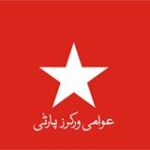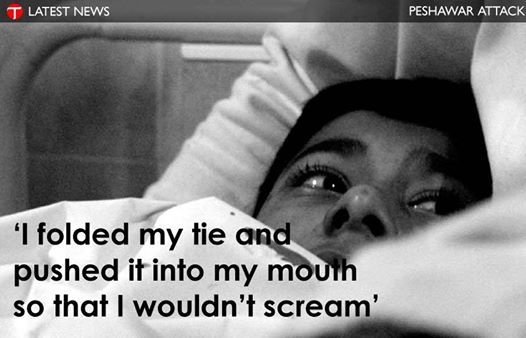Even though this story is about a porn ring operating in Europe and the USA but we know that similar establishments exist in other parts of the world too. We must be more careful about who takes care of our children regardless of them being relatives, friends or professionals. Sick minds who have the power over others even for short periods of time can make playthings out of defenceless human beings of any description. This group of people hunted babies and toddlers from 19 days to 4 years of age. The 43 men so far busted include a children’s puppeteer, a hotel manager, an emergency medical technician, and a day care worker.
.

This is the face of one predator – Uddari.
BOSTON — The men came from different walks of life on two continents: a children’s puppeteer in Florida, a hotel manager in Massachusetts, an emergency medical technician in Kansas, a day care worker in the Netherlands. In all, 43 men have been arrested over the past two years in a horrific, far-flung child porn network that unraveled like a sweater with a single loose thread.
In this case, the thread was a stuffed toy bunny.
The bunny, seen in a photo of a half-naked, distraught 18-month-old boy, was used to painstakingly trace a molester to Amsterdam. From there, investigators made one arrest after another of men accused of sexually abusing children, exchanging explicit photos of the attacks and even chatting online about abducting, cooking and eating youngsters.
Authorities have identified more than 140 young victims so far and say there is no end in sight as they pore through hundreds of thousands of images found on the suspects’ computers. They are also trying to determine whether the men who talked about murder and cannibalism actually committed such acts or were just sharing twisted fantasies.
The still-widening investigation has been code-named Holitna, after a river in Alaska with many tributaries.
“They are the worst of the worst,” said Bruce Foucart, agent in charge of the U.S. Customs and Immigration Enforcement agency’s Homeland Security Investigations unit in Boston. “This isn’t just a child that’s nude and someone’s taking pictures of him; this is a child that’s being raped by an adult, which is horrific.”
The case began to unfold when Robert Diduca, a Sheraton hotel manager from Milford, Mass., sent the photo of the Dutch boy to an undercover federal agent in Boston. Diduca, a married father of three who used the screen name “Babytodd,” thought he was sending the picture to another man with a sexual interest in babies and toddlers.
Agents forwarded the photo to Interpol, the international police organization, and to several other countries.
An investigator for the Dutch police recognized the stuffed bunny as Miffy, a familiar character in a series of Dutch children’s books. She also traced the boy’s orange sweater to a small Amsterdam store that had sold only 20 others like it.
The boy’s photo was broadcast on a national TV program similar to “America’s Most Wanted.” Within minutes, friends and relatives called the child’s mother.
Robert Mikelsons, a 27-year-old day care worker who baby-sat the boy, was arrested. On his computer were thousands and thousands of images of children being molested and raped, including the boy holding the stuffed bunny.
Photos and online chats found on computers owned by Diduca and Mikelsons led to more than three dozen other suspects in seven countries, including Canada, Britain, Germany, Sweden and Mexico. The oldest victim in the Netherlands was 4, the youngest just 19 days old.
Massachusetts U.S. Attorney Carmen Ortiz, whose office prosecuted Diduca, said the demand for photos of sexual assaults of young children, including babies and toddlers, has increased sharply in recent years.
“This demand leads to the abuse of children, yet there is this misconception that somehow, viewing child pornography is a victimless crime,” said. “It clearly is not.”
Diduca pleaded guilty to child porn and sexual exploitation charges and was sentenced to 18 years in prison. His lawyer, Richard Sweeney, said Diduca was sexually abused as a child by a Boy Scout leader. “He gets it, he knows he needs to be punished, he knows what he did is wrong,” Sweeney said.
Mikelsons also received an 18-year sentence, followed by indefinite psychiatric commitment, after confessing to sexually abusing more than 80 children.
The horror did not let up after the Mikelsons case.
In May, authorities arrested Michael Arnett of Roeland Park, Kan., after finding pornographic photos he allegedly produced. Agents discovered the pictures when they searched the computer of a Wisconsin man who had been chatting online with Mikelsons.
What they found on Arnett’s computer was unlike anything some of the investigators had ever come across: long, graphic, online chats about his desire to abduct, kill and eat children. They said he had also made photos of a naked 2-year-old boy in a roasting pan inside his oven. The child and two other boys Arnett allegedly abused and photographed were later identified and found alive.
In July, authorities arrested four men they say had online discussions with Arnett about kidnapping and eating children. Those arrested included Ronald Brown, a children’s puppeteer from Largo, Fla. (A YouTube video shows Brown during an appearance on a Christian TV kids show in the 1980s. In the video, he tells a child puppet that he did the right thing by refusing to look at “dirty pictures” some other youngsters tried to show him.)
In excerpts of an online chat between Arnett and Brown from 2011, the two men appear to be discussing their desire to cook a child for Easter.
“he would make a fine Easter feast,” Arnett says.
“yes, his thighs and butt cheeks would be fantastic for Easter,” Brown responds.
A lawyer for Arnett would not comment on the allegations. Brown’s lawyer did not return calls.
Prosecutors said Brown acknowledged his online conversations but said that it was all a fantasy and that he would never hurt anyone.
“Obviously the discussions regarding their claims of cannibalism are disturbing and a concern to our agency,” said ICE spokesman Ross Feinstein. He said agents are following all leads “to make sure these individuals didn’t follow through on any of their claims.”
To find the young victims, investigators carefully studied thousands of photos, read hours of Internet chats and worked with the National Center for Missing and Exploited Children. They also employed some forensic wizardry.
After finding a video on Diduca’s computer of a bound, 2-year-old boy being raped, investigators enhanced the images of furniture and carpet and determined the attack took place in a motel room in Bakersfield, Calif.
Then they pinpointed the date by way of a TV that was playing in the background in the video, figuring out exactly when a particular episode of “Family Matters” aired along with a certain Pepperidge Farms commercial.
A man from Black Forest, Colo., was arrested and is awaiting trial.
Similarly, in the Arnett case, investigators discovered that a water bottle in one of the photographs carried the name of a swim and scuba center in Overland Park, Kan. With the help of teachers at an elementary school, they identified three children shown in the photographs, including the toddler posed in the roasting pan.
The mother of one of the boys said she initially did not believe the allegations against Arnett, a family friend for about 15 years. She said her son, now 7, and several nephews often spent weekends at Arnett’s home four or five years ago.
“Well, when we first got the phone call, we thought there’s no way. You guys got the wrong guy,” she said. The Associated Press does not identify victims of sexual abuse or their families.
But then investigators showed her photos Arnett had allegedly taken of her son with a shirt and no pants.
“Regret? For sending my son with a sick-minded guy, that’s the only regret I have. I had no idea,” she said. “It’s depressing.”
For the agents working on the case, the leads never seem to end.
Last week, they arrested another Massachusetts man after finding child pornography and photos of what appeared to be dead children on his computer. He allegedly had online chats with Arnett and Brown.
More arrests are expected.
“The agents that work for me are extremely driven on this type of investigation,” said Bart Cahill, assistant agent in charge of Homeland Security Investigations in Boston. “They really believe that they are taking out horrific violators and saving kids.”
DENISE LAVOIE, Associated Press
Associated Press writers Maria Sudekum in Kansas City, Mo., and Matt Sedensky in West Palm Beach, Fla., contributed to this report.
From
Huffington Post
.
.









